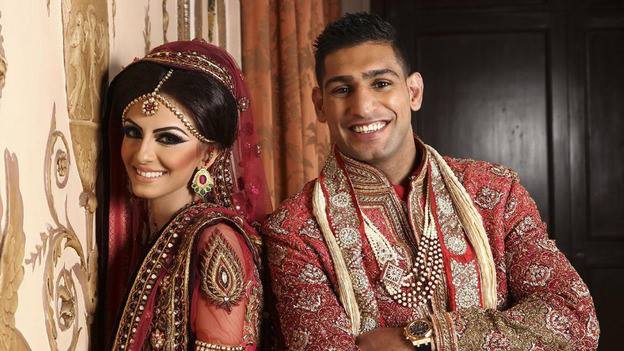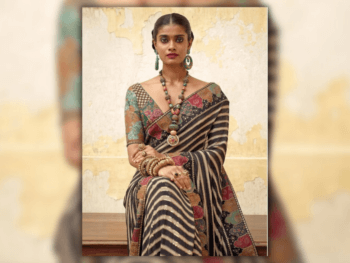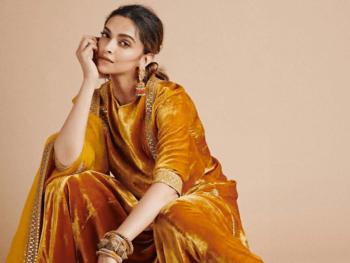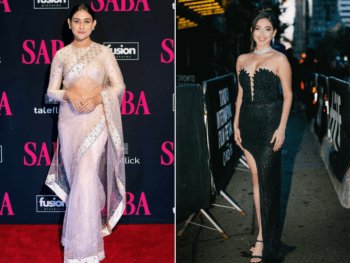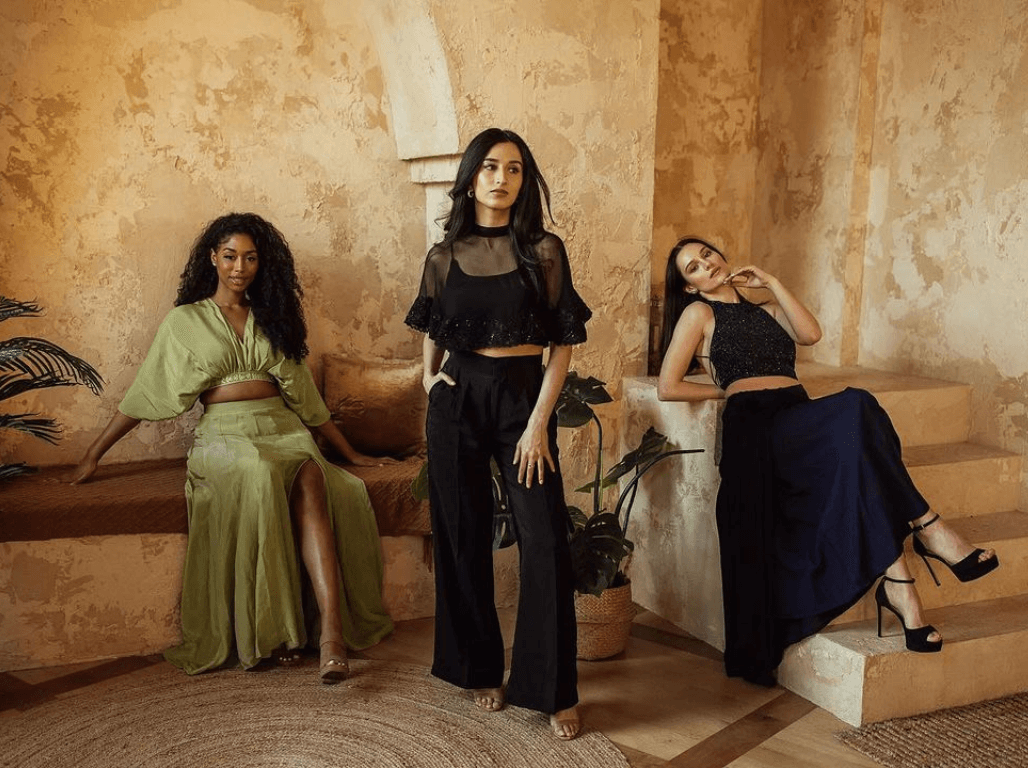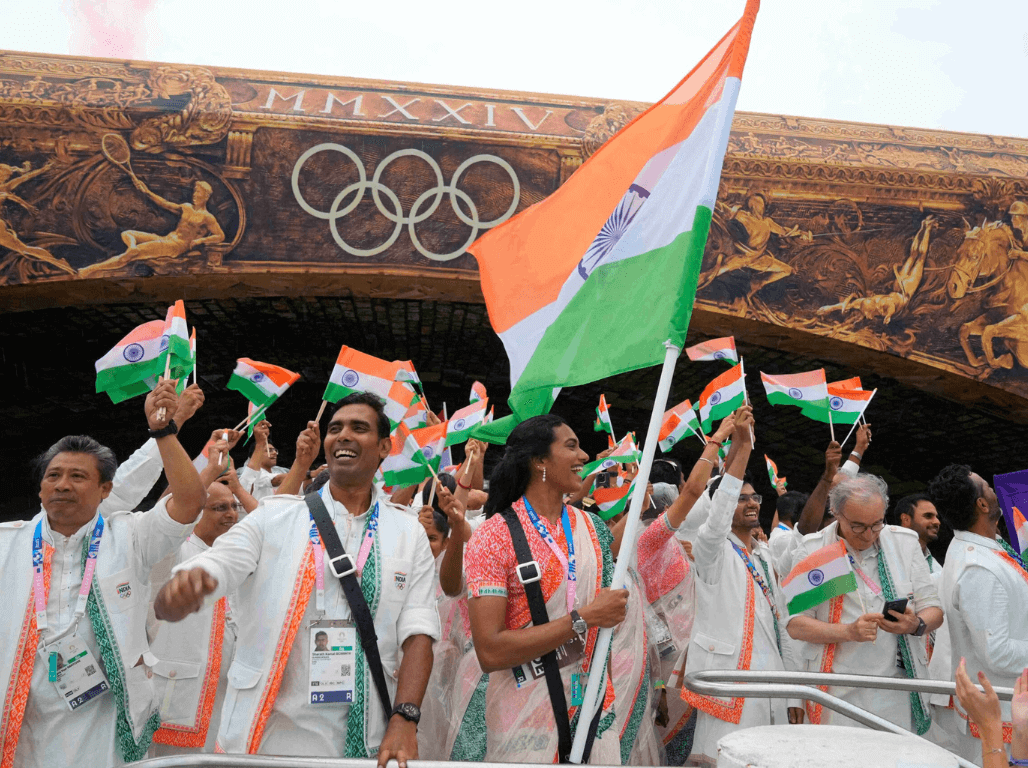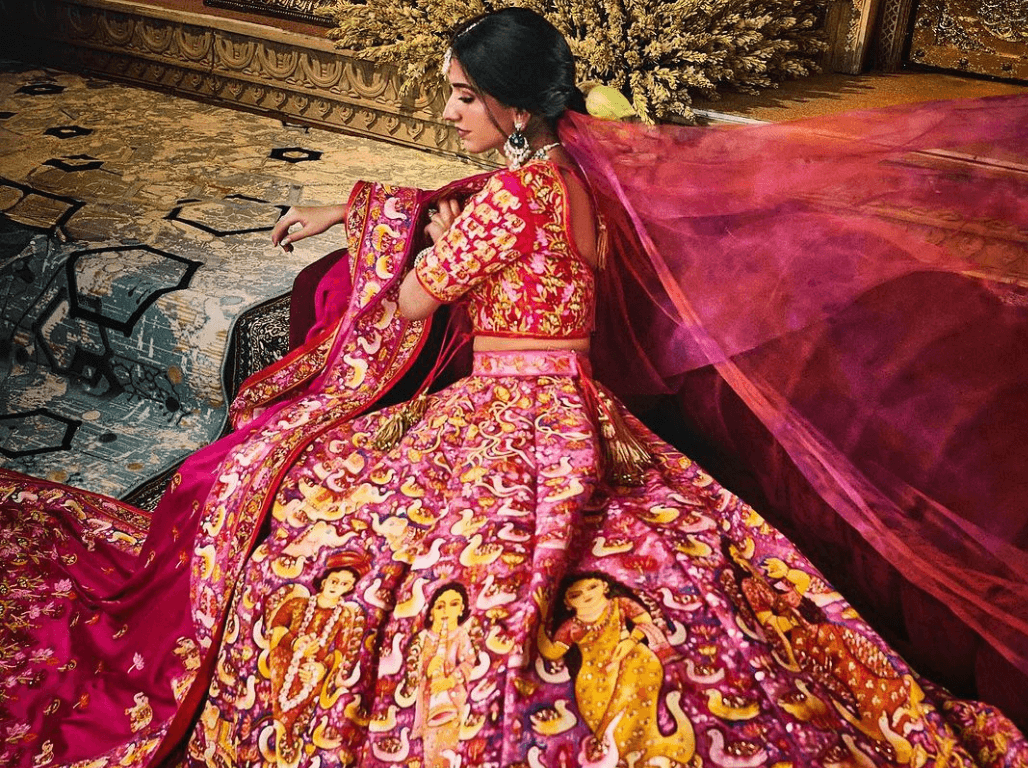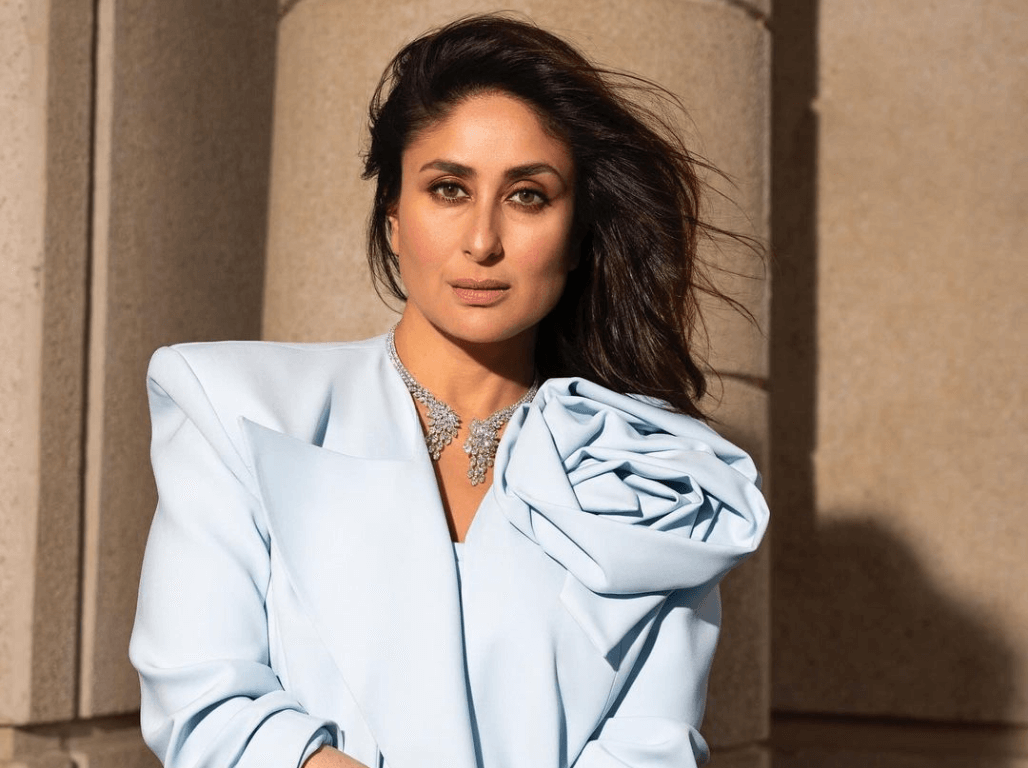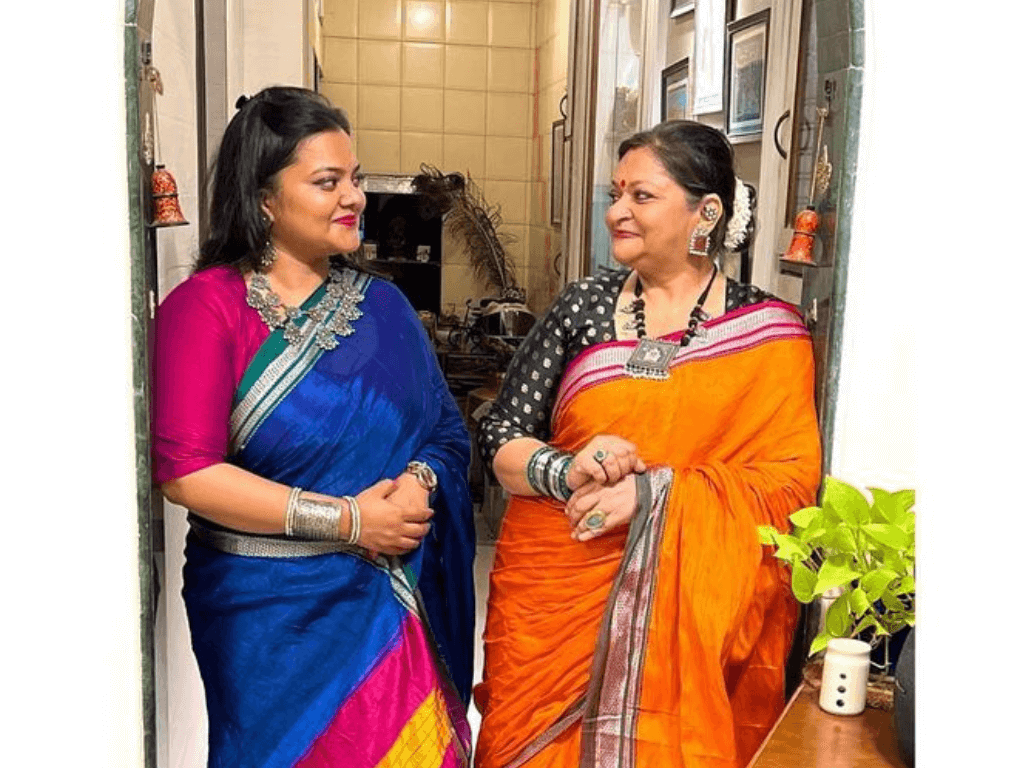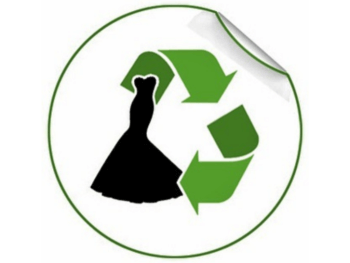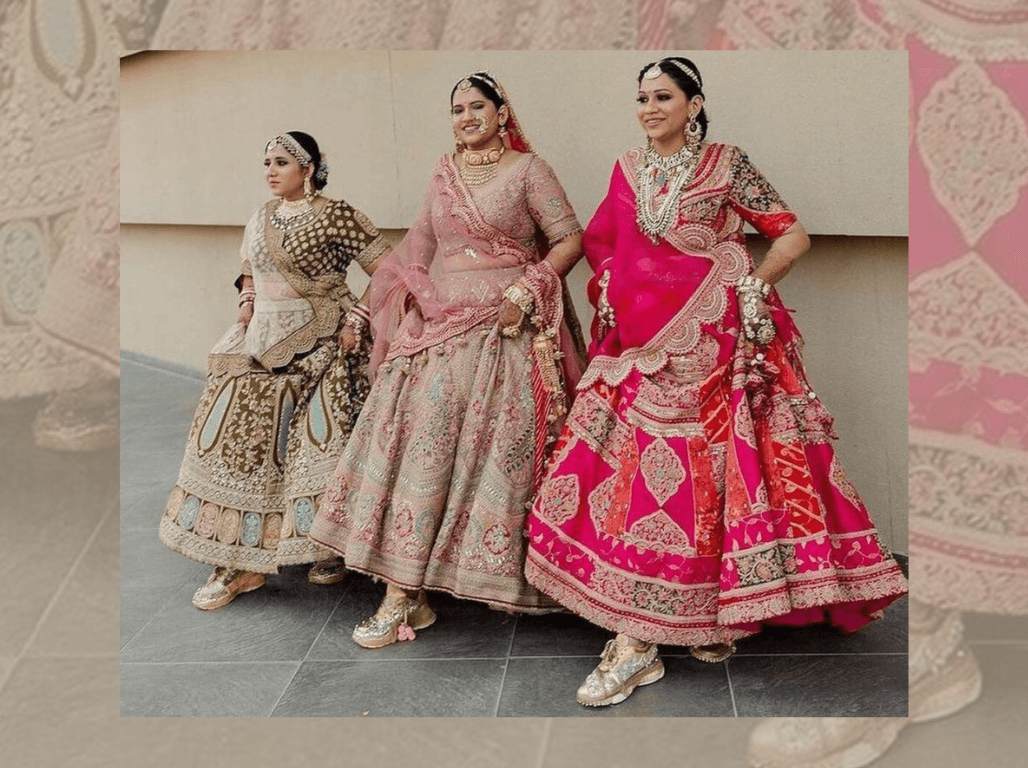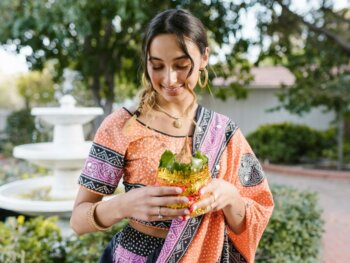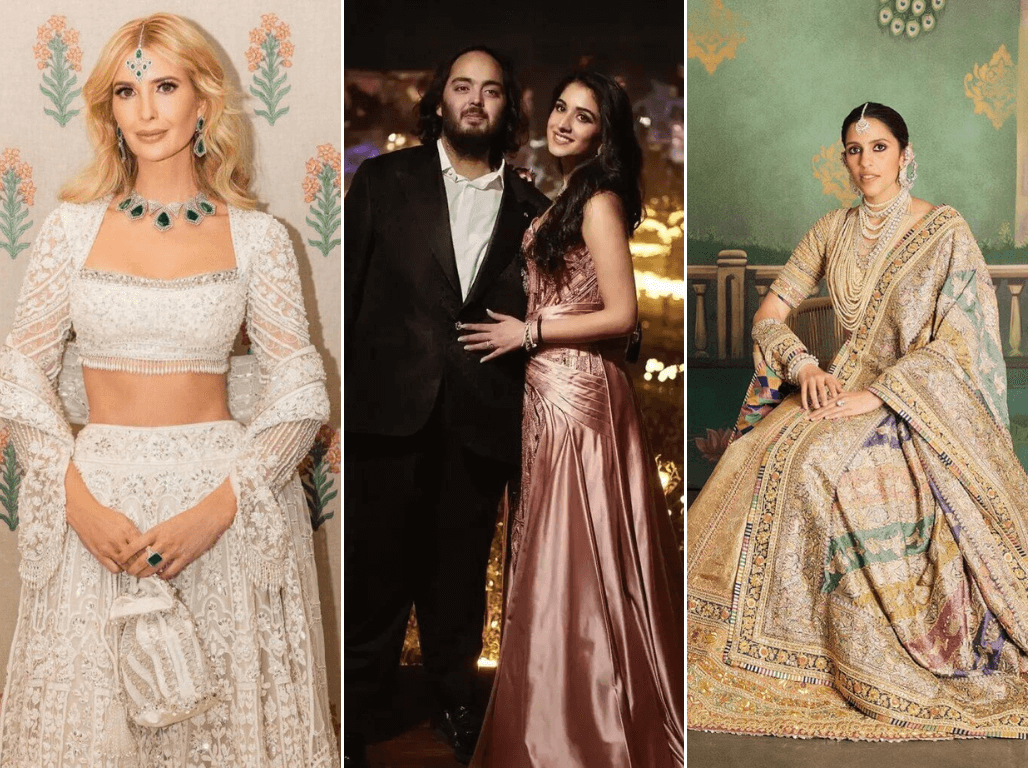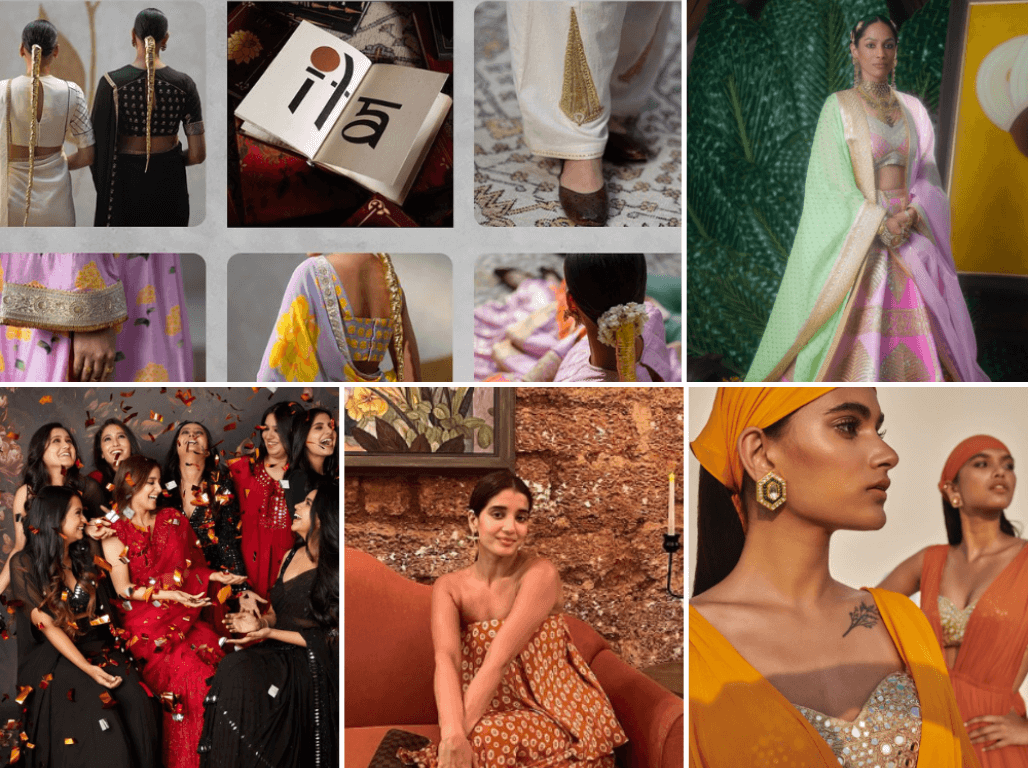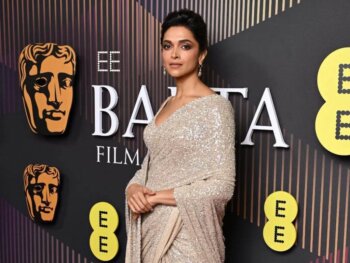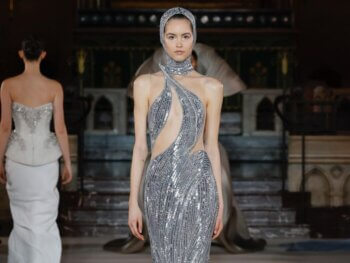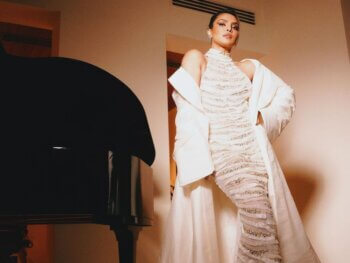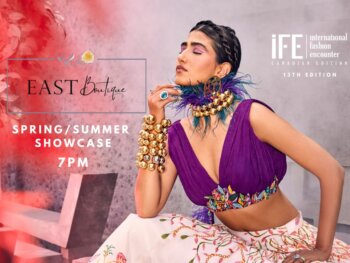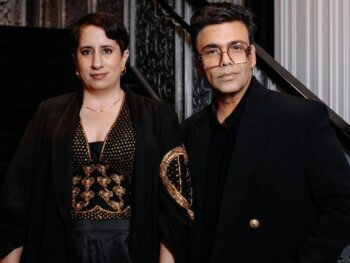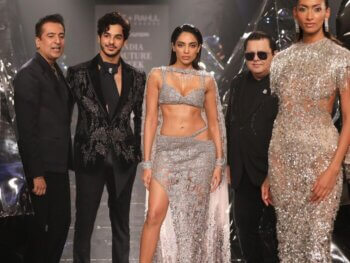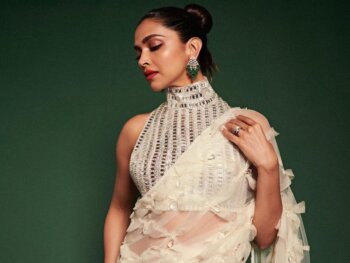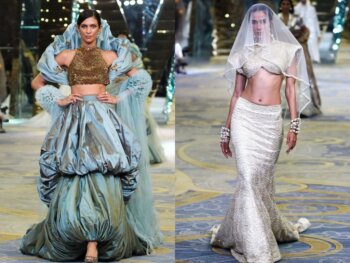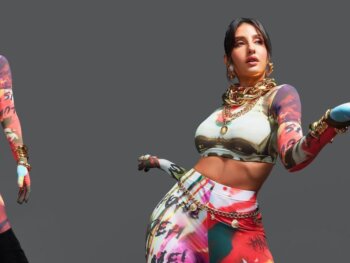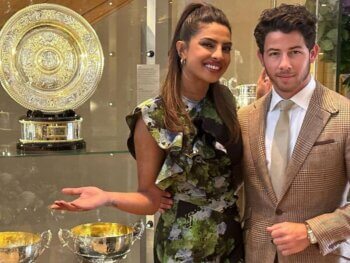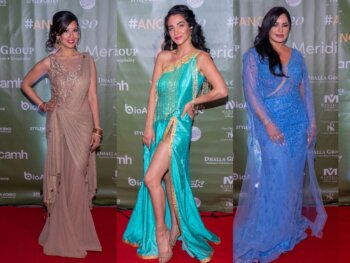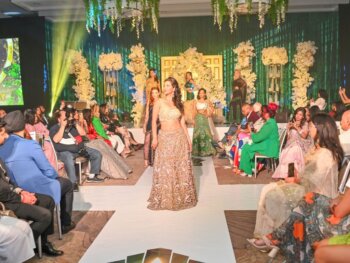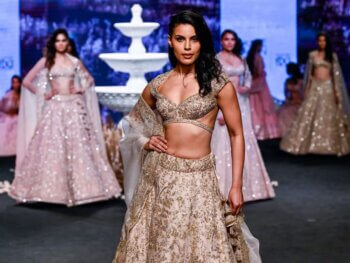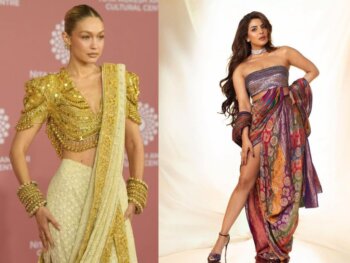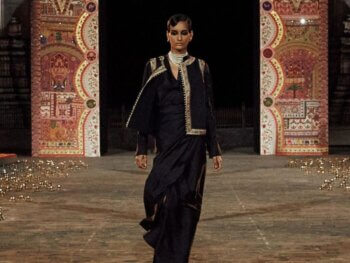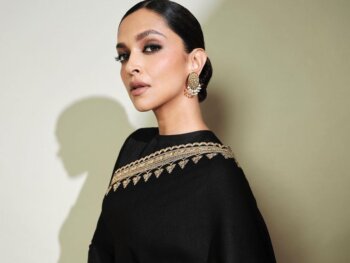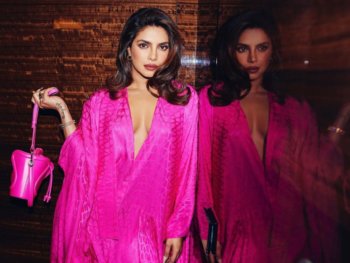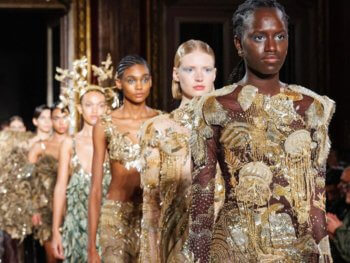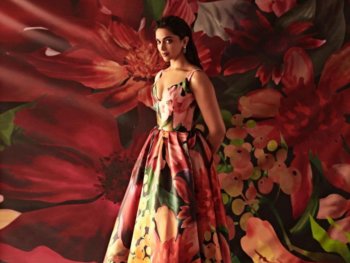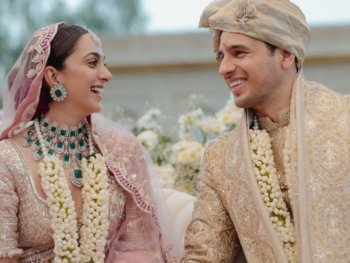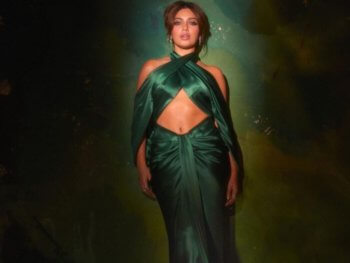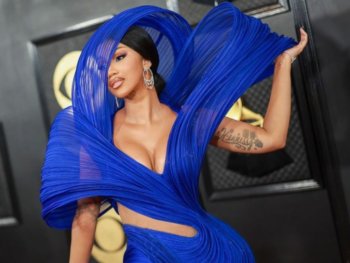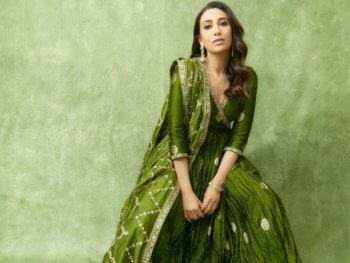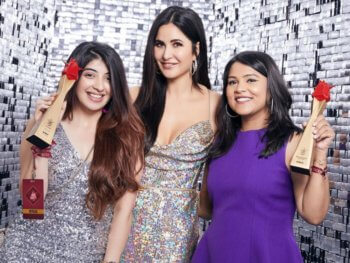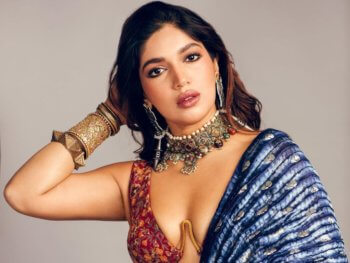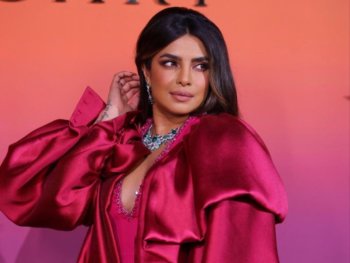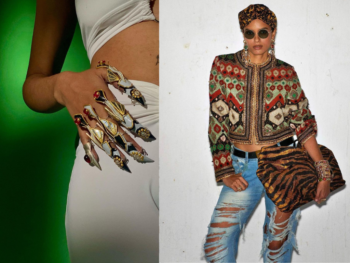British Boxing Champion Amir Khan, 26 tied the knot with New York based political science student, Faryal Makhdoom, 20 at an extravagant ceremony in New York on Saturday, June 1st, at Waldorf Astoria.
A source said: “It was an incredible ceremony. Because of his training the arrangements were left to Faryal but she did a brilliant job. They couldn’t take the smiles off their faces.”
Amir admitted on Twitter that he had left most of the work to Faryal, and wrote on Twitter: “The only thing I’ve done is try my clothes on.”
We take a closer look at the wedding gown and jewelry worn by the bride.
Faryal wore a stunning red-and-gold Lehanga Choli (traditional skirt and blouse) designed by Tarun Tahiliani, who is a well-known and famous Indian fashion designer. The lehanga was accompanied with an equally detailed dupatta (long scarf). Tahiliani’s craftsmanship and eye for infusing traditional silhouettes with modern design is apparent in Faryal’s wedding outfit.


Makhdoom’s lehanga, which gives her the princess look, is richly embroidered with zardozi work. Introduced during the Mughal era during the reign of Muhammad Bin Tughlak, it is called zardozi or ari and is all done by hand in order to bring depth and richness to textiles in this era. As it is apparent in her lehanga, golden threads are layered over the material. The lehanga itself is very heavy especially after the fabric and metal wires are combined. In the olden days, golden thread was used. No expense was spared for the champion’s million-dollar wedding and the age-old tradition to use the golden threads continued in their wedding.
In the earlier days, the artisans used resham thread and zardozi embroidery as a display of wealth and prosperity in the garments worn by women during this time period. Today, it continues to be worn and is popular among Bollywood stars and celebrities. Zardozi work requires a lot of patience and time as the artisan sits on the floor with the material for hours with two long pieces of wood, thread, and a small pencil, which aid him to work on the rich designs you can see on her lehanga, choli, and dupatta. Nowadays, most of the designers of this artwork are Navsari women. In addition, the women also sew in a variety of zari, sequins, stones, coree, beads, and shiny stones that further give the material a royal touch.
 The modern touch in Faryal’s wedding outfit shines in her blouse even though there is more zardozi work that is embedded on the blouse, its see-through sleeves gives it a unique and modern look.
The modern touch in Faryal’s wedding outfit shines in her blouse even though there is more zardozi work that is embedded on the blouse, its see-through sleeves gives it a unique and modern look.The jewelry that she has on is made of kundan. Known as kundan keshri that also received popularity during the Mughal period flourished in the Indian states of Rajasthan, Punjab, and Bihar. This is a traditional form of Indian gemstone jewelry and it is the oldest form of jewelry worn in India. Faryal has accessorized red and gold matching kundan maang tika (worn on the forehead), hathphool (literally translated into flowers in hand), and matching necklace sets and earrings. The wedding was a lavish million-dollar celebration, which involved the groom setting the stage for Bollywood numbers in front of his 350 guests. The party does not end here, however, for the bride and groom who will continue the celebration Amir’s native town in Bolton, England.
Photo courtesy: ZR Stiletto Sharp and Hello! Magazine


















































